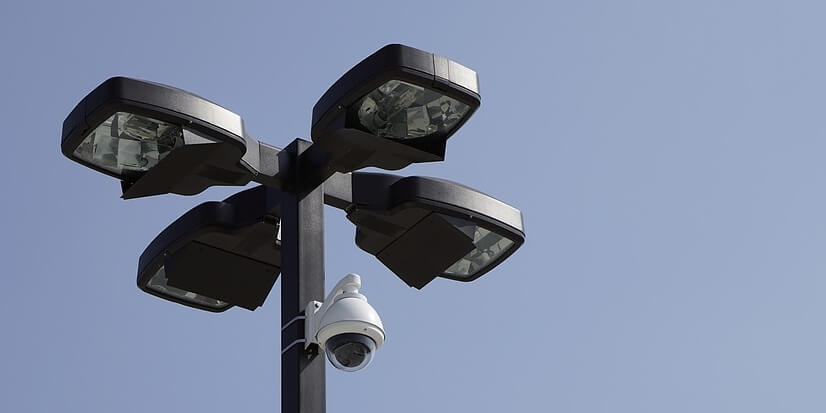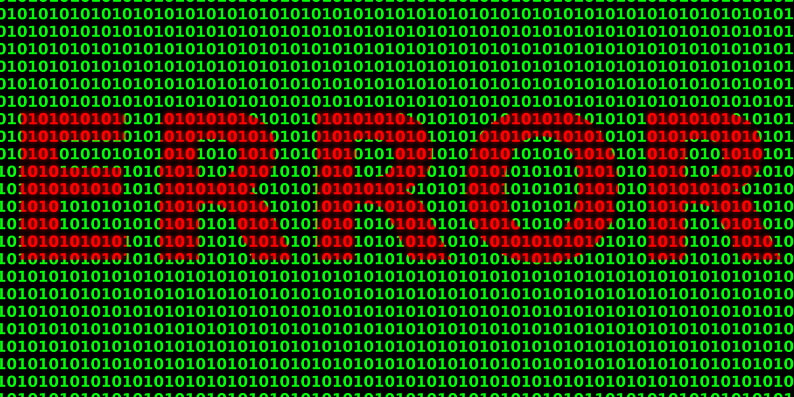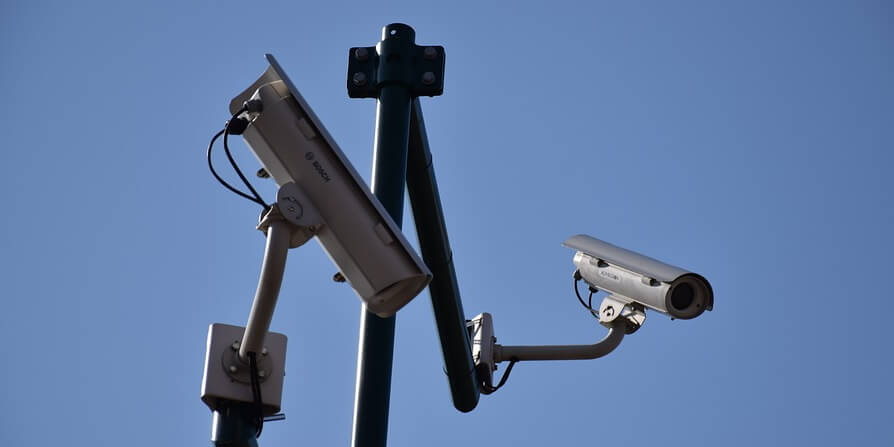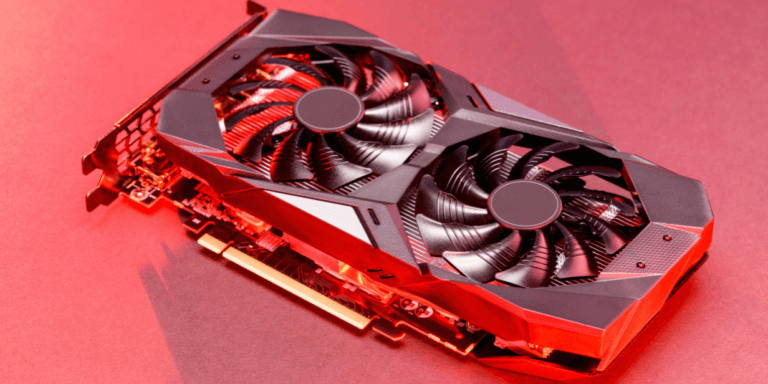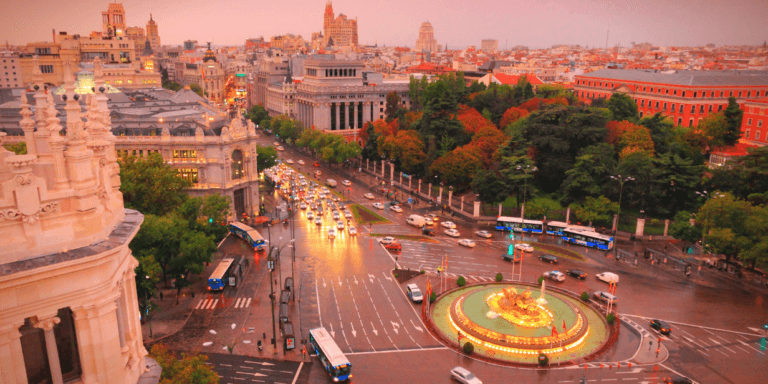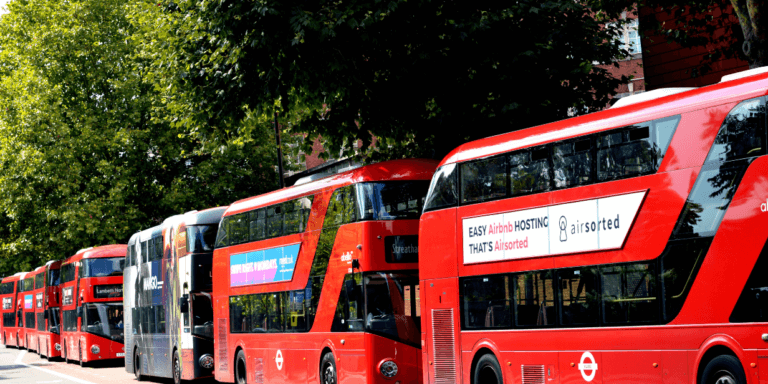With so many choices in the market, what’s the best solution for your LPR needs? When business owners and property managers need reliable data about the vehicles that use their parking lots, subdivisions and roadways, the sheer number of available options can be overwhelming. We’re here to help.
Compare LPR Camera vs Any Camera
The comparison is between purchasing an LPR camera vs. using any IP camera with ALPR software. At first this may sound like potato, potahto, but it’s not.
The right choice is one that:
- Is cost-effective with a low Total Cost of Ownership.
- Has a highly accurate LPR reading.
- Grows with your evolving needs.
A decent LPR camera can easily cost over $1,000. You’ll need to connect it to your system to process the data you receive, configuration takes work, and often they don’t perform as promised. But what if buying an LPR camera isn’t your only option? What if there’s a better way?
If you’re researching the best LPR technologies, let this be your guide. Let’s talk about what LPR cameras can and can’t do, how to figure out what features you actually need and a popular alternative you may not have heard of until today. (Spoiler Alert: Plate Recognizer’s ALPR works with any IP camera.)
An LPR Camera (camera with embedded LPR) is quite different from a camera with Plate Recognizer. Source: Google.
What Businesses Need From LPR Technology
An LPR camera or license plate recognition camera has an internal computer running software in real-time processing images and video. It’s understandably more expensive than a regular security camera or webcam because it contains more electronics. Usually the best LPR cameras can “read” information from license plates in one or more lanes. Most have built-in infrared for night-time or low light situations.
The camera tags, records and stores information about license plates and sends that information wherever you instruct it to. Often it takes some adjusting and configuring to get them just right so they capture plates in different light situations and vehicle speeds. The truth is, LPR cameras have some problems, and we’re going to talk about those in a minute, plus explore an alternative.
The best LPR option for you will:
- Fit your budget.
- Consistently capture plates as vehicles come and go.
- Have high accuracy in decoding license plates.
- Can read license plates even at hard angles, low light, etc.
Like almost any technology, the best LPR camera or LPR solution for you might not be the same one that works for the business next door. Even the most expensive LPR cameras don’t always deliver what they promise. And at over a thousand dollars a unit, most people don’t want to take a trial and error approach to finding the right one.
There’s No One Size Fits All for LPR
How can you narrow down your choices so you don’t waste time and money? The manager looking to make his apartment complex parking lot a safer place has different needs than the retailer who wants to improve curbside pickup processes. A parking garage owner might be looking to stop rule breakers, while a gated community manager might have the goal of improving security and convenience for community members.
The best LPR camera to buy in your situation will depend on how fast cars are moving, how wide is each target capture area, where you need to position your camera, environmental lighting, your minimum resolution requirements and other factors. It’s a big investment.
Businesses of all types in more than 90 countries have found there’s a better way to get the license plate data they need using our ALPR and cameras that cost much, much less. Keep reading and we’ll even tell you how you can try it for free.
Survelliance camera from a lamp pole. Source: Google.
Standard IP Camera vs. LPR Camera – What’s the Difference?
You can use any camera to take a photo of a license plate. If you’re an individual and you just want to record a car that hit you for insurance purposes, the camera on your cell phone will do. But if you need to make sense of a lot of license plate images over time, you need technology designed to detect, read and store license plate data correctly.
A lot of businesses already have cameras for surveillance purposes, they just aren’t built for license plate recognition. Non-LPR cameras come at a lower price point, and we can help you use them to get better results than you would with an LPR camera at an acceptable cost.
An IP camera is an Internet Protocol camera, one that is capable of taking images and sending them through an IP network. Most IP cameras are hard-wired to send images and video stream over to a Network Video Recorder (NVR) or server.
That makes IP cameras a popular choice for home or business security. They can be used in a wide range of environments and accessed from any signed in location. Owners can connect to them remotely to pan, zoom or adjust settings.
The best thing about a regular IP camera is that they cost much less than a camera with LPR on the edge. And no matter where you live on the planet, there’s probably a local vendor who can help you get yours installed, connected and configured.
What’s the best ALPR solution for parking lots? Source: Google.
How to Get LPR Using Any IP Camera
Plate Recognizer offers license plate recognition software that doesn’t run on the camera itself. Instead, the software runs via the cloud or on-premise on Linux, Windows, Jetson, Nano, Raspberry Pi or another device. With our environment you can take almost any IP camera and your current business computer, run our software on it and our software will detect and decode the license plates found.
We offer a few different products so you can choose what works best for you. With Snapshot, you can set up your camera’s motion detection function for large objects so the camera takes an image upon vehicle approach but isn’t activated by dogs, pedestrians or waving tree limbs. When a large object motion is detected, you can grab that image and send that straight to Snapshot to decode the plates in that image. We have an option that runs on our hosted servers in the cloud and an on-premise SDK that doesn’t require an Internet connection after setup is complete.
Stream is our option for video or live camera feeds. The software processes input in real-time, detecting vehicles and decoding plates almost instantaneously. With either product you can use your own dashboard or system to track and analyze results or you can choose to receive powerful insights and set up custom alerts using our ALPR Dashboard.
#1 – Better LPR Accuracy
Many LPR cameras have a starting price well over a thousand dollars, and a so-called cheap LPR camera is several hundred. The differences in housing, IR illumination method, lensing and other aspects are worth looking into, but the most important thing to consider is accuracy. That’s one of the top benefits Plate Recognizer offers over an LPR camera.
Whether you buy a cheap LPR camera or an expensive one, you only see a return on your investment if they provide accurate license plate data. Manufacturers advertise 99 percent accuracy, but that’s for images taken in a lab environment–such as that of clean license plates at a standstill in bright daylight.
Independent video surveillance evaluator IPVM covers cameras, video analytics and more, with research cited in global publications and used for US Congressional reporting. In testing they found cameras that advertised 99 percent accuracy actually had rates closer to 80 percent, sometimes lower when vehicles were moving at speeds over 45 mph.
What will you do with the 20 percent of plates that are not read accurately? With such a high rate of misreads, how can you tell a bad apple from a good one?
If you don’t get accurate data from your LPR camera, the money you paid goes to waste. Consider the potential complications if incorrect data led to the following:
- Sending a speeding ticket to the wrong vehicle owner because your LPR camera gave you the wrong license plate information.
- Denying entrance to a homeowner at a parking entrance gate because their vehicle drove in at an angle and the LPR camera couldn’t make sense of their plates.
- Receiving negative reviews and losing business because the LPR camera at your restaurant misread license plates and sent your staff false alerts when customers arrived for curbside pickup.
Our solution is so accurate that some of our customers use our ALPR as a backup so they still get results when an ALPR camera fails.
Plate Recognizer lets you use less expensive cameras with our software for accurate, dependable results at a reasonable price. Because Plate Recognizer is optimized for images that are dark, blurry, at an angle, moving fast and other situations, you get the data you need and avoid the inaccuracies that come with many LPR cameras.
If an LPR camera has 80% accuracy, how are you going to deal with the 20% that’s wrong?. Source: Online website.
#2 – Reduced Misreads
Think how frustrating it would be to invest in LPR technology, then need information on a specific vehicle and not be able to find it in your database because your LPR camera misread a license plate or provided instead text it found on another part of the vehicle. In accuracy studies, LPR cameras don’t always offer dependable vehicle detection. Many plates weren’t captured at all. Plus, they noticed “numerous” issues with character misreading, logging the same vehicle repeatedly, capturing only partial plates and other mistakes.
Add to this the prevalence of bumper stickers and signages on vehicles. Many LPR cameras read these as the actual license plate!
At Plate Recognizer, we have put a significant amount of investment in LPR. We avoid common LPR camera misreads like seeing a bumper sticker as a license plate or capturing business logos, text on vehicle wraps or other signage instead of a plate number. For example, we treat license plates in Texas differently than license plates in Virginia. Why? Because research has shown that Virginia license plates have 10x more vanity plates compared with plates in Texas.
You get dependable accuracy across vehicle types, whether they’re moving or still, and in diverse light and weather conditions.
#3 – Easy Integration
If you think LPR cameras are expensive, engineering resources are even more costly–and scarce
With Plate Recognizer, we share all of our sample code in eight different programming languages so you can incorporate LPR results in a breeze. Effortlessly use webhooks to forward LPR data to your system. Deploy and integrate with your existing solution in 60 minutes.
We also offer resources for getting your cameras set up to get the best LPR results.
#4 – Continuous Updates
Our ALPR is already much more accurate and dependable than the best LPR cameras, and it’s continually improving. For example, we recently added a huge upgrade on Vehicle Types, so our software automatically differentiates between SUVs, Vans, Pickup Trucks and other vehicle types.
Once you buy an LPR camera, its capabilities and functions aren’t going to change. It won’t get any better. With Plate Recognizer, our continual innovation means the value our customers receive just keeps improving. Improvements may include updates like handling the new Smokey Bear license plate for the state of Oregon or the five new specialty plates coming soon to Arizona. These improvements may lead to even better accuracy.
Plate Recognizer lets you mix and match camera brands so yo’ure not stuck to one vendor. Source: Google.
#5 – Camera Agnostic
With Plate Recognizer, the cost of camera replacement is lower because there are no interoperability issues, and you never get stuck with one camera vendor.
A camera vendor may give you a nice discount for the initial purchase in an effort to “suck you in”, but force you to purchase subsequent cameras at regular price because they know you’re stuck with them.
Once you buy several LPR cameras of the same brand, if one breaks you’ll need to replace it with one from the same manufacturer or risk compatibility issues. With Plate Recognizer, it’s okay to mix and match cameras.
So let’s say you buy five total LPR cameras and two fail a few years later and need to be replaced. You might have to shell out a few thousand for LPR cameras to keep your existing setup working properly. However, if you rely on our software powering LPR, you can replace the two failed units with any model and not experience integration issues.
Keep in mind also with our Snapshot product, one Snapshot Cloud or SDK license can tackle LPR for multiple cameras.
#6 – Amazing Support
Once you complete your LPR camera purchase, you’re on your own if you have a problem down the road. In contrast, with Plate Recognizer you receive fast, detailed, helpful support via email, WhatsApp, Skype, text or TeamViewer. After all, we recognize that your most expensive resource is your IT team.
Whatever your issue, you have a friend who can help resolve your technical ALPR challenges. For example, we can help you figure out the best way to get LPR on an axis camera. We go as deep as walking you through the different configurations and reviewing your Python or Javascript source code to make sure that everything is set up correctly. This helps reduce down time and allows you to receive the full advantage of your LPR deployment.
Lower Total Cost of Ownership is key for any IT investment. Source: Google.
#7 – Lower Total Cost of Ownership
When you compare buying an LPR camera to the cost of an IP camera with Plate Recognizer, it first appears the cost of ownership is roughly the same. For our Snapshot product, our pricing isn’t based on how many cameras you use, but by the number of lookups you require a month.
It’s rare for an organization to buy just one LPR camera because few have just one area they want to monitor. So, if you need to monitor an entrance, an exit and a parking lot you could purchase three LPR cameras that average $900 to $1,500 apiece. Or you could buy three IP cameras for a few hundred dollars each and subscribe to Plate Recognizer. Both solutions end up to be around the same amount spread out over several years. In some cases you might even pay a little less with the second option.
However, the above analysis is only on the hardcost of the LPR solution. To make a fair assessment, you really need to consider the total cost of ownership. This is where Plate Recognizer really shines. Customers typically see a lower total cost of ownership when you add up the:
- Cost of camera.
- Software and hardware costs.
- Cost for technical support when issues arise.
- Cost to integrate LPR results with internal systems.
- Loss of revenue and potential legal repercussions because of LPR misreads.
- Cost of paying customer support team when misreads occur.
With Plate Recognizer’s easy deployment and integration and dependable accuracy, you know costs in advance and avoid unexpected, avoidable fees associated with technical problems and misreads.
Try Plate Recognizer for Free
Plate Recognizer is a superior solution to expensive LPR cameras because it’s cost-effective, accurate and continually improving. Integration with your system is simple, and it works with a range of camera types. Plus, if you need support anywhere along the way, we’re here to help. Before you do another LPR deployment, give Plate Recognizer a try at no risk.
You could pay top dollar for the best LPR camera you can find, or you could try Plate Recognizer for free. Sign up for an account and test drive our ALPR software for free.
Which of the 7 Advantages resonate most with you? Let us know!

